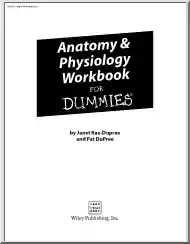No comments yet. You can be the first!
Content extract
Prosthetic Restoration Following Removal of Chondrosarcoma in the Premaxillary Region: A Case Presentation and Follow-up for 16 Years Einar Ragnarsson, DDSa/Sigurjon H. Olafsson, DDS, MsDb Purpose: The present report describes a relatively simple but effective prosthodontic treatment following removal of a moderately well differentiated osteogenic chondrosarcoma in the premaxillary region. Materials and Methods: Following removal of a rare tumor, a young man was treated with gold crowns on three molars and a metal-ceramic crown on a first premolar, with attachments in the areas facing the defect for esthetic reasons. A removable partial denture was retained by the attachments and conventional cast retentive circumferential clasps, including a hollow obturator filling the defect. Results: The restoration has served the patient for 16 years, seemingly without discomfort, and it has not required any maintenance. The patient has kept up with his oral hygiene, using conventional methods
for the teeth and prosthesis, with periodic flushing with chlorhexidine solution. He has lived a normal family life and finished his university education. Conclusion: The problem-free use of the appliance can be at least partly explained by the patient taking oral hygiene measures seriously from the beginning. This report explains how relatively uncomplicated prosthodontic measures can enormously affect quality of life. Int J Prosthodont 2004;17:291–296 R estoring defects as described in this article is difficult, as the anterior support is entirely missing and contraction of the scar tissue around the defect can cause problems. Therefore, prosthetic restoration of intraoral defects after excision of diseased tissue, such as tumors, is often a challenge to the prosthodontist, and indeed the whole team treating such patients. The problems are not only technically difficult, requiring skill and imagination on the part of the prosthodontist and technician, but they also affect the
psychologic well-being of both the patient and his or her family.1,2 aAssociate Professor of Prosthodontics and Dean, Faculty of Odontology, The University of Iceland, Reykjavík. bAssociate Professor of Oral Surgery, Faculty of Odontology, The University of Iceland, Reykjavík. Correspondence to: Dr Einar Ragnarsson, The Icelandic Institute of Dental Research, Vatnsmýrarvegi 16, 101 Reykjavík Iceland. Fax: + (354) 5254874. e-mail: einarr@hiis Case Presentation A 23-year-old fish-farm worker visited his dentist complaining of swelling and pain around the central incisors. Radiographic examination showed radiolucency around both central incisors. This prompted an extirpation and root canal treatment of the central incisors (Figs 1 and 2). As the endodontic treatment did not seem to have any effect on the clinical picture, the patient was immediately referred to an oral surgeon at the National University Hospital in Reykjavík, Iceland, where a biopsy was taken. After thorough
pathologic examination (including consultation with pathologists from the Mayo Clinic, Case Western Reserve University, and with the late Prof Jens J. Pindborg, Copenhagen), the diagnosis was confirmed as a malignant, moderately well differentiated chondrosarcoma or chondroblastic osteosarcoma. Primary impressions were taken prior to surgery. The entire premaxilla was excised, involving the area anterior Volume 17, Number 3, 2004 291 Prosthetic Restoration Following Removal of Chondrosarcoma Fig 1a (left) Anterior and lateral views: swelling of upper lip. Fig 1b (below left) Fig 1c (below) Fig 2 Periapical radiographs at presentation. to the first premolar on the left side to the first molar on the right (Figs 3 and 4a). Neither radiation nor chemotherapy was used An immediate removable partial denture relined with soft tissue conditioner (Visco-Gel, Dentsply/Caulk) was inserted, enabling relatively normal speech and nutrition. 292 The International Journal of
Prosthodontics Occlusal aspect at presentation. Intraoral facial aspect at presentation. An important function of this device was its action as a space maintainer through the first healing period, restraining the contraction of the healing soft tissues (Fig 4b). After the primary healing period, complete gold crowns were made on the maxillary right first and second molars and the left first molar. A metal-ceramic crown was made on the maxillary right first premolar (Fig 5a). The maxillary right first premolar and left first molar crowns were furnished with extracoronal precision attachments (UGDO) (Fig 5a). A Vitallium framework (Dentsply) was designed, with conventional cast circumferential clasps on the right first and left second molars. The defect was filled with a hollow obturator, which was at first relined with tissue conditioner (Visco-Gel). After a few weeks, it was relined with methyl methacrylate.1 The problem of salivary flow and foul water collecting within hollow
obturators was solved by a silicone prop from a fishing float, which is easily removed without dropping it when opened. By means of a 20-mL syringe and largegauge hypodermic needle, the patient can easily flush the obturator with chlorhexidine, water, or a detergent of choice. The floats are inexpensive, have two props each, and can be bought in any of number of angler stores in the country (Figs 5 to 7). Ragnarsson/Olafsson Fig 3 Palatal and facial views of surgical specimen after excision. Fig 4a Defect at an early stage of treatment. Fig 4b Provisional obturator in place. Note chlorhexidine staining of teeth Fig 5a Defect 16 years after initial treatment. Fig 5b Float diameter is approximately 5 cm; length of prop is 1 cm. Volume 17, Number 3, 2004 293 Prosthetic Restoration Following Removal of Chondrosarcoma Fig 6 Left and right views of final obturator in place after 16 years. Fig 7a Note fish-float prop countersunk into top of hollow part of obturator. Fig
7b Fig 8 294 The International Journal of Prosthodontics Dark tooth discoloration is due to chlorhexidine. Periapical radiographs in 1989 (top) and 2003 (bottom). Ragnarsson/Olafsson Fig 9 Orthopantomogram in June 2003. Results The appliance has served the young man well and immensely increased his quality of life. It has given him flawless speech and almost normal chewing abilities By means of a thorough follow-up and good cooperation, this device has served the patient without any repair or adjustment for 16 years. During this period, he has regularly used chlorhexidine solution for flushing, the only drawback being the known dark discoloration (Figs 4 to 7). During this period, he has needed only minor restorative work. Discussion Osseointegrated implants offer an improved treatment modality in many instances, making restoration easier, extension less important, and retentive features more reliable. Sixteen years ago, implantology was not as common in Iceland as it is
today; although the case would now be viewed in light of modern implantology, it is possible that a better or different solution could not have been found.2 Each case is different, and numerous methods have been described in the literature to gain retention from both the remaining teeth, if any, as well as available bone and soft tissue support.3–5 In this case, a removable partial denture retained by long parallel attachments were used, along with “textbook type” circumferential clasps on gold crowns (Figs 4, 5a, and 8). Crowning the supporting teeth was justified, as they had already been treated with amalgam restorations and thus could be partly protected against the dental decay that could be imminent if the patient did not keep up with the oral hygiene measures recommended by the dental team. The crowning also offered ideal contouring of the supporting teeth The mesial attachments on the maxillary right first premolar and left first molar were used for esthetic purposes and
partly because their length and parallel path of insertion gave accurate and Fig 10 Facial and lateral views in 2003. Thinning of upper lip is obvious from lateral view. stable support facing the defect area, eliminating interference with the patient’s tongue. The argument for the use of a hollow obturator is the fact that it can be made thin and therefore relatively light, it is easy to clean, and, as in this case, it can derive some vertical support from the remaining tissues in the “roof” of the defect. In the present case, constriction in the area of the margins of the cavity even offered some retention. In cases such as this, the occlusion must be kept at minimal tooth contact and mutual support in the defect area and extremely light lateral contacts. The main occlusal load is supported by the remaining teeth There were no problems with adaptation to the prosthesis, and the only maintenance needed for 16 years has been removal of chlorhexidine stains from the teeth. During
this period, the patient has lived a normal family life. From the outset, the patient’s appearance has been acceptable and the function as normal as can be expected (Figs 9 and 10). In this case, the simple “maintenance free” reconstruction has no doubt improved the patient’s life and made it possible for him to carry on with his commitments without any obvious difficulties.6,7 The osteosarcoma is a highly malignant bone tumor that originates from the osteogenic mesenchymal matrix, the cells of which are capable of forming osteoid, osseous, cartilagenous, and fibrous tissue. Therefore, these tumors have been classified as chondroblastic, osteoblastic, and fibroblastic osteosarcomas.8 Chondrosarcomas or chondroblastic sarcomas are uncommon in the maxillofacial region, as are sarcomas in general Osteosarcomas of the jaws most often occur in the third decade of life, in contrast to osteosarcomas of long bones, which are more common in the second decade of life. Jaw chondrosarcomas
appear to have a slightly better prognosis than osteosarcomas9 According to the Head and Neck Sarcoma Registry, established by the Society of Head and Neck Surgeons,9 the major determinants of survival are adequacy of resection (margins free of tumor) and tumor Volume 17, Number 3, 2004 295 Prosthetic Restoration Following Removal of Chondrosarcoma cell type. Wide surgical excision is considered the treatment of choice by most pathologists and surgeons Chemotherapy and radiation seem to have undefined roles.10 This case has shown that, although each case may be different, the use of relatively simple methods and a skilled team approach to treatment planning, as well as careful use of new and old prosthetic principles, imagination, and good technology, has enabled this young man to enjoy an almost normal life for 16 years. 3. References 8. 4. 5. 6. 7. 9. 1. 2. 296 Chalian VA, Drane JB, Standish SM. Maxillofacial Prosthetics: A Multidisciplinary Practice. Baltimore:
Williams & Wilkins, 1971:133–157 Stegersjö G, Kahnberg K-E. Prosthetic restoration following maxillary resection without an oroantral defect: A case report. Int J Prosthodont 1999;12:391–394. The International Journal of Prosthodontics 10. Locker D. Patient-based assessment of the outcomes of implant therapy: A review of the literature Int J Prosthodont 1998;11:453–461 Sigurgeirsdottir E, Minsely GE, Rothenberger SL. Incorporation of an ERA attachment for obturator framework design: A clinical report. J Prosthet Dent 2002;87:477–480. Okay DJ, Genden E, Buchbinder D, Urken M. Prosthodontic guidelines for surgical reconstruction of the maxilla: A classification system of defects. J Prosthet Dent 2001;86:352–363 Kornblith AB, Zlotolow IM, Gooen J, et al. Quality of life of maxillectomy patients using an obturator prosthesis. Head Neck 1996;18:323–334 Rogers SN, Lowe D, McNally D, Brown JS, Vaughan ED. Health-related quality of life after maxillectomy: A comparison
between prosthetic obturation and free flap. J Oral Maxillofac Surg 2003;61:174–181 MedlinePlus Medical Encyclopedia: Osteosarcoma. Available at: http://www.nlmnihgov/medlineplus/ency/article/001650htm Wanebo HJ, Koness RJ, MacFarlane JK, et al. Head and neck sarcoma registry. Head Neck 1992;14:1–7 Aziz SR, Miremadi AR, McCabe JC. Mesenchymal chondrosarcoma of the maxilla with diffuse metastasis: Case report and literature review. J Oral Maxillofac Surg 2002;60:931–935
for the teeth and prosthesis, with periodic flushing with chlorhexidine solution. He has lived a normal family life and finished his university education. Conclusion: The problem-free use of the appliance can be at least partly explained by the patient taking oral hygiene measures seriously from the beginning. This report explains how relatively uncomplicated prosthodontic measures can enormously affect quality of life. Int J Prosthodont 2004;17:291–296 R estoring defects as described in this article is difficult, as the anterior support is entirely missing and contraction of the scar tissue around the defect can cause problems. Therefore, prosthetic restoration of intraoral defects after excision of diseased tissue, such as tumors, is often a challenge to the prosthodontist, and indeed the whole team treating such patients. The problems are not only technically difficult, requiring skill and imagination on the part of the prosthodontist and technician, but they also affect the
psychologic well-being of both the patient and his or her family.1,2 aAssociate Professor of Prosthodontics and Dean, Faculty of Odontology, The University of Iceland, Reykjavík. bAssociate Professor of Oral Surgery, Faculty of Odontology, The University of Iceland, Reykjavík. Correspondence to: Dr Einar Ragnarsson, The Icelandic Institute of Dental Research, Vatnsmýrarvegi 16, 101 Reykjavík Iceland. Fax: + (354) 5254874. e-mail: einarr@hiis Case Presentation A 23-year-old fish-farm worker visited his dentist complaining of swelling and pain around the central incisors. Radiographic examination showed radiolucency around both central incisors. This prompted an extirpation and root canal treatment of the central incisors (Figs 1 and 2). As the endodontic treatment did not seem to have any effect on the clinical picture, the patient was immediately referred to an oral surgeon at the National University Hospital in Reykjavík, Iceland, where a biopsy was taken. After thorough
pathologic examination (including consultation with pathologists from the Mayo Clinic, Case Western Reserve University, and with the late Prof Jens J. Pindborg, Copenhagen), the diagnosis was confirmed as a malignant, moderately well differentiated chondrosarcoma or chondroblastic osteosarcoma. Primary impressions were taken prior to surgery. The entire premaxilla was excised, involving the area anterior Volume 17, Number 3, 2004 291 Prosthetic Restoration Following Removal of Chondrosarcoma Fig 1a (left) Anterior and lateral views: swelling of upper lip. Fig 1b (below left) Fig 1c (below) Fig 2 Periapical radiographs at presentation. to the first premolar on the left side to the first molar on the right (Figs 3 and 4a). Neither radiation nor chemotherapy was used An immediate removable partial denture relined with soft tissue conditioner (Visco-Gel, Dentsply/Caulk) was inserted, enabling relatively normal speech and nutrition. 292 The International Journal of
Prosthodontics Occlusal aspect at presentation. Intraoral facial aspect at presentation. An important function of this device was its action as a space maintainer through the first healing period, restraining the contraction of the healing soft tissues (Fig 4b). After the primary healing period, complete gold crowns were made on the maxillary right first and second molars and the left first molar. A metal-ceramic crown was made on the maxillary right first premolar (Fig 5a). The maxillary right first premolar and left first molar crowns were furnished with extracoronal precision attachments (UGDO) (Fig 5a). A Vitallium framework (Dentsply) was designed, with conventional cast circumferential clasps on the right first and left second molars. The defect was filled with a hollow obturator, which was at first relined with tissue conditioner (Visco-Gel). After a few weeks, it was relined with methyl methacrylate.1 The problem of salivary flow and foul water collecting within hollow
obturators was solved by a silicone prop from a fishing float, which is easily removed without dropping it when opened. By means of a 20-mL syringe and largegauge hypodermic needle, the patient can easily flush the obturator with chlorhexidine, water, or a detergent of choice. The floats are inexpensive, have two props each, and can be bought in any of number of angler stores in the country (Figs 5 to 7). Ragnarsson/Olafsson Fig 3 Palatal and facial views of surgical specimen after excision. Fig 4a Defect at an early stage of treatment. Fig 4b Provisional obturator in place. Note chlorhexidine staining of teeth Fig 5a Defect 16 years after initial treatment. Fig 5b Float diameter is approximately 5 cm; length of prop is 1 cm. Volume 17, Number 3, 2004 293 Prosthetic Restoration Following Removal of Chondrosarcoma Fig 6 Left and right views of final obturator in place after 16 years. Fig 7a Note fish-float prop countersunk into top of hollow part of obturator. Fig
7b Fig 8 294 The International Journal of Prosthodontics Dark tooth discoloration is due to chlorhexidine. Periapical radiographs in 1989 (top) and 2003 (bottom). Ragnarsson/Olafsson Fig 9 Orthopantomogram in June 2003. Results The appliance has served the young man well and immensely increased his quality of life. It has given him flawless speech and almost normal chewing abilities By means of a thorough follow-up and good cooperation, this device has served the patient without any repair or adjustment for 16 years. During this period, he has regularly used chlorhexidine solution for flushing, the only drawback being the known dark discoloration (Figs 4 to 7). During this period, he has needed only minor restorative work. Discussion Osseointegrated implants offer an improved treatment modality in many instances, making restoration easier, extension less important, and retentive features more reliable. Sixteen years ago, implantology was not as common in Iceland as it is
today; although the case would now be viewed in light of modern implantology, it is possible that a better or different solution could not have been found.2 Each case is different, and numerous methods have been described in the literature to gain retention from both the remaining teeth, if any, as well as available bone and soft tissue support.3–5 In this case, a removable partial denture retained by long parallel attachments were used, along with “textbook type” circumferential clasps on gold crowns (Figs 4, 5a, and 8). Crowning the supporting teeth was justified, as they had already been treated with amalgam restorations and thus could be partly protected against the dental decay that could be imminent if the patient did not keep up with the oral hygiene measures recommended by the dental team. The crowning also offered ideal contouring of the supporting teeth The mesial attachments on the maxillary right first premolar and left first molar were used for esthetic purposes and
partly because their length and parallel path of insertion gave accurate and Fig 10 Facial and lateral views in 2003. Thinning of upper lip is obvious from lateral view. stable support facing the defect area, eliminating interference with the patient’s tongue. The argument for the use of a hollow obturator is the fact that it can be made thin and therefore relatively light, it is easy to clean, and, as in this case, it can derive some vertical support from the remaining tissues in the “roof” of the defect. In the present case, constriction in the area of the margins of the cavity even offered some retention. In cases such as this, the occlusion must be kept at minimal tooth contact and mutual support in the defect area and extremely light lateral contacts. The main occlusal load is supported by the remaining teeth There were no problems with adaptation to the prosthesis, and the only maintenance needed for 16 years has been removal of chlorhexidine stains from the teeth. During
this period, the patient has lived a normal family life. From the outset, the patient’s appearance has been acceptable and the function as normal as can be expected (Figs 9 and 10). In this case, the simple “maintenance free” reconstruction has no doubt improved the patient’s life and made it possible for him to carry on with his commitments without any obvious difficulties.6,7 The osteosarcoma is a highly malignant bone tumor that originates from the osteogenic mesenchymal matrix, the cells of which are capable of forming osteoid, osseous, cartilagenous, and fibrous tissue. Therefore, these tumors have been classified as chondroblastic, osteoblastic, and fibroblastic osteosarcomas.8 Chondrosarcomas or chondroblastic sarcomas are uncommon in the maxillofacial region, as are sarcomas in general Osteosarcomas of the jaws most often occur in the third decade of life, in contrast to osteosarcomas of long bones, which are more common in the second decade of life. Jaw chondrosarcomas
appear to have a slightly better prognosis than osteosarcomas9 According to the Head and Neck Sarcoma Registry, established by the Society of Head and Neck Surgeons,9 the major determinants of survival are adequacy of resection (margins free of tumor) and tumor Volume 17, Number 3, 2004 295 Prosthetic Restoration Following Removal of Chondrosarcoma cell type. Wide surgical excision is considered the treatment of choice by most pathologists and surgeons Chemotherapy and radiation seem to have undefined roles.10 This case has shown that, although each case may be different, the use of relatively simple methods and a skilled team approach to treatment planning, as well as careful use of new and old prosthetic principles, imagination, and good technology, has enabled this young man to enjoy an almost normal life for 16 years. 3. References 8. 4. 5. 6. 7. 9. 1. 2. 296 Chalian VA, Drane JB, Standish SM. Maxillofacial Prosthetics: A Multidisciplinary Practice. Baltimore:
Williams & Wilkins, 1971:133–157 Stegersjö G, Kahnberg K-E. Prosthetic restoration following maxillary resection without an oroantral defect: A case report. Int J Prosthodont 1999;12:391–394. The International Journal of Prosthodontics 10. Locker D. Patient-based assessment of the outcomes of implant therapy: A review of the literature Int J Prosthodont 1998;11:453–461 Sigurgeirsdottir E, Minsely GE, Rothenberger SL. Incorporation of an ERA attachment for obturator framework design: A clinical report. J Prosthet Dent 2002;87:477–480. Okay DJ, Genden E, Buchbinder D, Urken M. Prosthodontic guidelines for surgical reconstruction of the maxilla: A classification system of defects. J Prosthet Dent 2001;86:352–363 Kornblith AB, Zlotolow IM, Gooen J, et al. Quality of life of maxillectomy patients using an obturator prosthesis. Head Neck 1996;18:323–334 Rogers SN, Lowe D, McNally D, Brown JS, Vaughan ED. Health-related quality of life after maxillectomy: A comparison
between prosthetic obturation and free flap. J Oral Maxillofac Surg 2003;61:174–181 MedlinePlus Medical Encyclopedia: Osteosarcoma. Available at: http://www.nlmnihgov/medlineplus/ency/article/001650htm Wanebo HJ, Koness RJ, MacFarlane JK, et al. Head and neck sarcoma registry. Head Neck 1992;14:1–7 Aziz SR, Miremadi AR, McCabe JC. Mesenchymal chondrosarcoma of the maxilla with diffuse metastasis: Case report and literature review. J Oral Maxillofac Surg 2002;60:931–935




